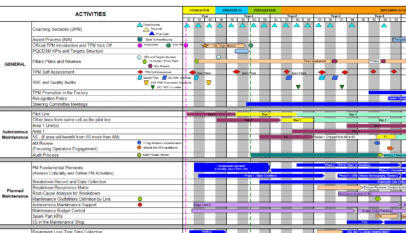When discussing business strategy, there is often a debate between OKRs and KPIs. However, is it necessary to choose between the two? Should we prioritize setting challenging objectives with OKRs or constantly monitoring our business with KPIs? When discussing business strategy, there is often a debate between OKRs and KPIs. However, is it necessary to choose between the two? Should we prioritize setting challenging objectives with OKRs or constantly monitoring our business with KPIs?
Here’s a revelation for you – these two don’t need to be at loggerheads. They work best when they’re combined. Let’s break down the differences and see how they can coalesce.
OKRs and KPIs: Understanding the Differences
OKRs, or Objectives and Key Results, are not merely a measurement system akin to KPIs. They serve different purposes and scopes within the organization. OKRs outline the ambitious objectives and the key results needed within a specific timeframe, typically a quarter.
On the other hand, KPIs, Key Performance Indicators, act as the pulse-check for your business at any given moment. They are akin to vital signs for a human being, providing real-time information about your business’s performance or “health.”
KPIs have their standards or benchmarks. However, they are NOT objectives or goals. They are the tools to verify if you’re on track to achieving your desired objectives and results.
The Expedition Analogy: Unifying OKRs and KPIs
Let’s envision an expedition to climb Mount Everest to further illustrate how OKRs and KPIs can work harmoniously. In this case, your Objective (O) of the OKRs is to reach the summit of Mount Everest. Your Key Results (KRs) might include:
- Reach Base Camp within the first week.
- Ascend to Camp II within the following week.
- Complete the climb to the summit within three weeks.
In this scenario, where do the KPIs fit in? They would serve as constant indicators of the team’s “health” and readiness, insuring you’re on track to achieve your OKRs. The KPIs for this expedition might include the following:
- Team members’ health and energy levels
- Climbing gear and equipment status
- Weather conditions
- Daily altitude gain
While the OKRs (reaching specific milestones within defined timelines) may vary based on the circumstances, the KPIs (health, equipment, weather, altitude) remain constant as they monitor the “health” and safety of the team throughout the expedition.
Remember, maintaining KPIs within normal ranges is crucial but remember they are not the final goal. If you’re only focused on KPIs, you might lose sight of whether you’re moving closer to your ultimate goal – reaching the summit of Mount Everest.
To sum up, it’s not a matter of picking OKRs or KPIs. Rather, it’s about utilizing both in harmony to enhance your company’s efficiency. After all, why settle for one when you can reap the advantages of both?


















